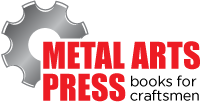- Preface
- Acknowledgements
- Chapter 1: Welding Overview
- Chapter 2: Safety
- Chapter 3: Terms, Joints, & Edge Preparation
- Chapter 4: Tools & Welding Tables
- Chapter 5: Shielded Metal Arc Welding
- Chapter 6: Wire Feed Welding
- Chapter 7: Gas Tungsten Arc Welding
- Chapter 8: Oxyacetylene
- Chapter 9: Controlling Distortion
- Chapter 10: Cutting Processes
- Chapter 11: Brazing & Soldering
- Chapter 12: Common Problems & Solutions
- Chapter 13: Design Tips
- Chapter 14: Fabrication & Repair Tips
- Chapter 15: Tools & Tooling
- Chapter 16: Pipe & Tubing
- Chapter 17: Metallurgy
- Chapter 18: Power Supplies & Electrical Safety
- Chapter 19: Bending & Straightening
- Index
- Credits
Chapter 9
Controlling Distortion
People forget how fast you did a job—but they remember how well you did it.
—Howard Newton
What is Weld Distortion?
Welding heat induced shrinkage causes distortion which, in turn, causes permanent changes in the shape and dimensions of workpiece metal and leaves behind residual stresses. Dimensional changes can ruin a part and the residual stresses remaining inside can weaken it. Even if the part bears no external load, the residual stress acts as an initial load on top of what may eventually be imposed, reducing the total load-carrying capacity of the part.
Heating with & without Restraint
- No Restraint – First, look at the case where a steel block is slowly and evenly heated and cooled without any restraint. When heated, the metal atoms move apart from each other with great force. If these forces are unrestrained and the heating and subsequent cooling are gradual, the metal will expand when hot and then contract to its original size when cooled. No permanent changes in size and shape will occur. The unrestrained metal cube in Figure 9-1 is an example of this situation. Regardless of its shape, an unrestrained metal object that is gradually heated and cooled will return to its original dimensions on returning to room temperature.
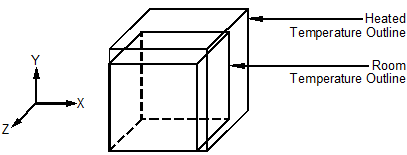
Figure 9-1. Exaggerated three-dimensional changes in an unrestrained metal cube gradually and evenly heated and cooled.
- Complete restraint in one dimension – Figure 9-2 shows a steel cylinder restrained between the jaws of a vise. As the temperature rises, the cylinder expands and its volume increases. Since the cube cannot move horizontally—the x direction—due to the immovable vise jaws at either end, the cube must expand more in the y and z dimensions, where it grows radially, becoming fatter. Because expansion in the y and z directions is greater than the elastic properties of the metal, when the metal’s yield strength is exceeded, the metal experiences plastic and permanent flow. We say the metal of the cylinder has been upset. Although some of the expansion forces were relieved and dissipated by upsetting the metal, some of these expansion forces will remain in the workpiece—like springs under tension—as permanent residual stress.
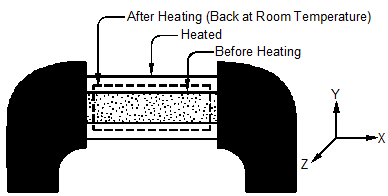
Figure 9-2. Exaggerated three-dimensional changes in a steel cylinder completely restrained in one dimension.
- Partial restraint in one dimension – Figure 9-3 shows a steel cylinder that has been partially restrained by adding a spring between the cylinder and the vise jaw. When the temperature is cycled, partial restraint produces dimensional changes somewhere between the no-restraint case and the complete-restraint case. After temperature cycling, the cylinder is fatter and shorter, but does not show as much dimensional change as in the complete-restraint case. Some residual stress may also remain.
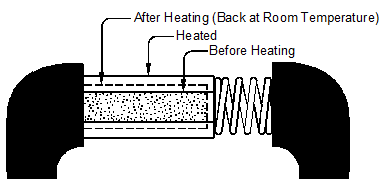
Figure 9-3. Exaggerated three-dimensional changes in a steel cylinder partially restrained by a spring in one dimension.
Workpiece Restraints Causing Distortion
The examples of restraint forces in Figures 9-2 and 9-3 were caused by the vise jaws that were external to the work. In the following examples, because of uneven heating and cooling, a portion of the work itself causes the restraint, and this restraint results in weld-induced distortion.
- Steel bar with uneven heating – Figure 9-4 shows a steel bar that has been heated in one area on one side of the bar. This is another case of a change in dimension under partial restraint, similar to that in Figure 9-3, but here the restraint is caused by the cooler metal in the bar. After cooling, the heated side of the bar becomes slightly shorter while the unheated side remains its original length. The bar bends because of these uneven lengths. Some of the expansion force bends the bar and some remains as residual stress as symbolized by the spring in the bottom drawing.
Figure 9-4. How uneven application of heat to one side of a steel bar causes permanent bending or distortion.
- Heated edge of sheet metal – Figure 9-5 (left) shows a flat sheet metal panel before it is heated. Heating one edge of the panel makes it expand and soften while the cool edge does not. When the sheet cools back to room temperature, most of the heat-induced ripples disappear, but the sheet is permanently shorter along the once-heated edge. Uneven heating of the plate and the restraint imposed by its cooler side cause a dimensional change and upsetting. See Figure 9-5 .
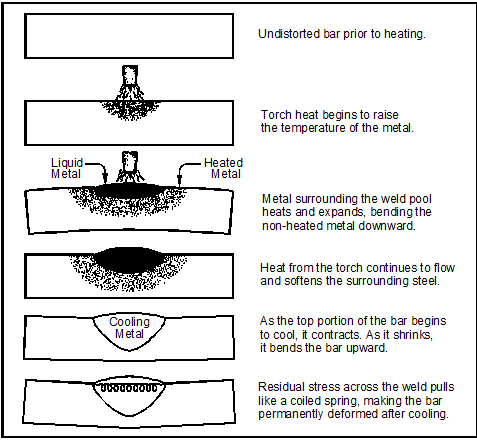
Figure 9-4. How uneven application of heat to one side of a steel bar causes permanent bending or distortion.
- Heated edge of sheet metal – Figure 9-5 (left) shows a flat sheet metal panel before it is heated. Heating one edge of the panel makes it expand and soften while the cool edge does not. When the sheet cools back to room temperature, most of the heat-induced ripples disappear, but the sheet is permanently shorter along the once-heated edge. Uneven heating of the plate and the restraint imposed by its cooler side cause a dimensional change and upsetting. See Figure 9-5 (right).

Figure 9-5. Sheet metal panel before heating (left) and rippling while hot (right).
Upsetting will be even more severe if a water spray is used to cool the sheet rapidly. This rapid cooling further prevents the unheated edge from heating and expanding as the heat flows across the panel. Note that what happens during the cooling period is seldom what happens during the heating period. The ripples must be controlled while they are hot, or they will prevent even joints and good welds.
- Partial cut across a plate by flame cutting or plasma – Because of differential heating and the restraint caused by the uncut portion of the plate, the hinge effect occurs. See Figure 9-6. If two parallel cuts are made simultaneously, the metal between the cuts shows little distortion because heating and expansion is balanced. Dual cutting torches are available to make parallel cuts that eliminate the hinge effect. Refer to Figure 10-12.

Figure 9-6. Hinge effect in partially cut steel plate.
- Weld bead applied along a bar – Figure 9-7 shows a single weld bead placed lengthwise along a straight steel bar. As the bead is applied, one side of the bar is heated and expands and the other does not.
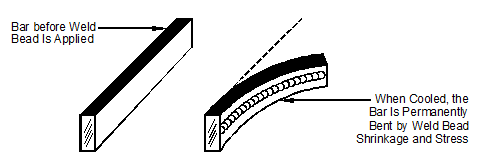
Figure 9-7. Effect of applying a weld bead on one side of a steel bar.
